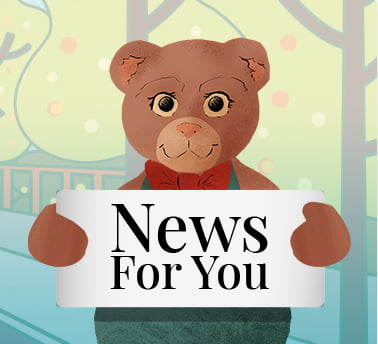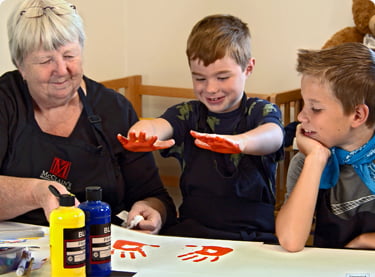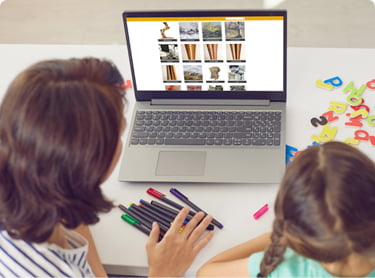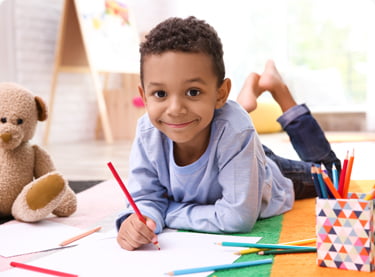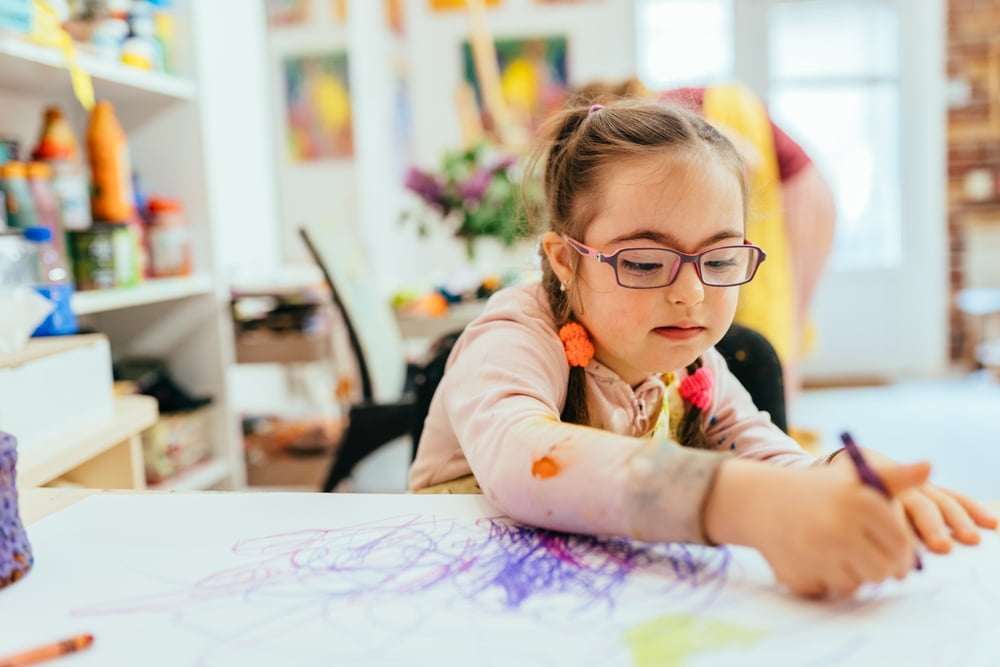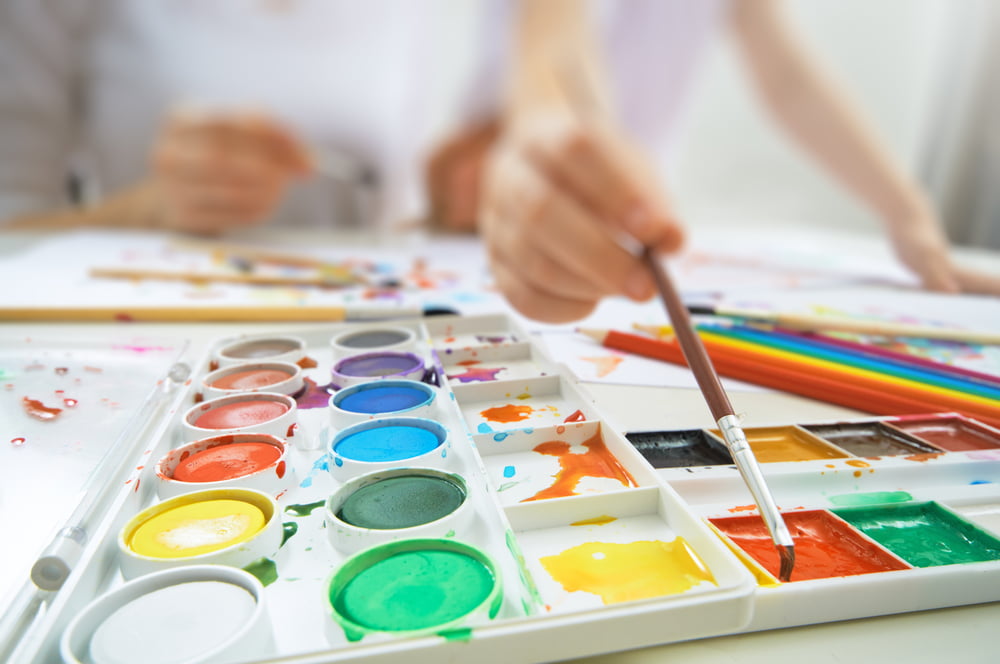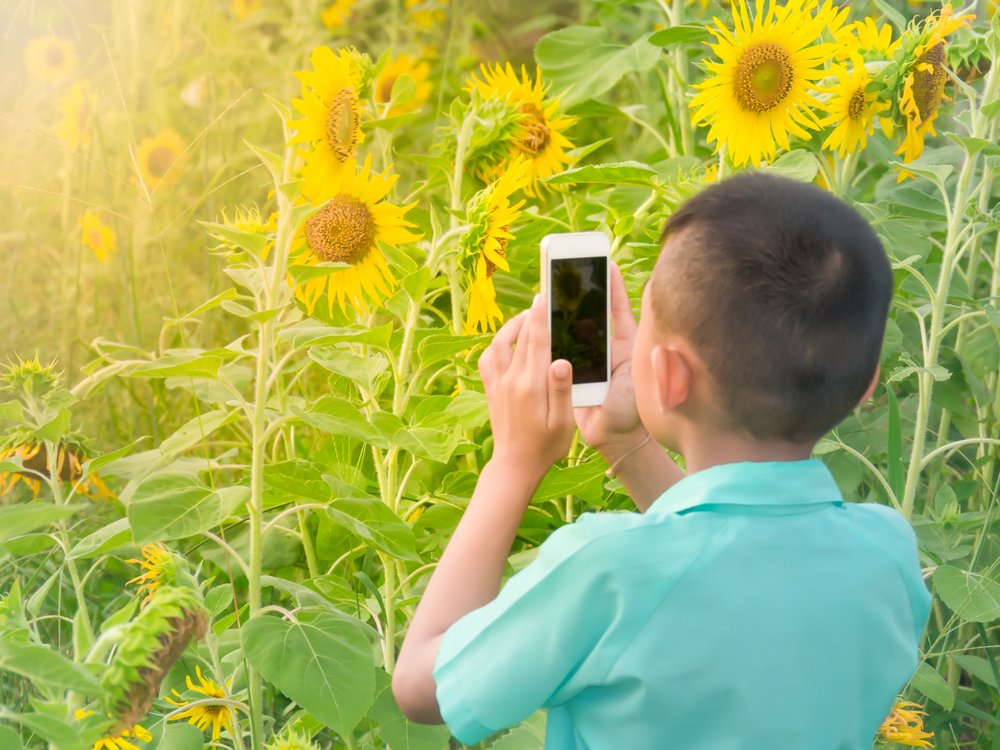
The best art lessons for kids allow for varying degrees of complexity and creativity. For example, a portrait could be a simple line drawing based on lines and shapes, or a far more detailed drawing requiring advanced fine motor skills. Learning the fundamentals will set kids up for more precise drawings as they progress.
In this Golden Road Arts video, artist, printmaker and educator, Barbara Mason reveals the simple way to draw faces. Students are encouraged to see the similarities and differences in faces, leading to a well-proportioned face and accurate features.
Learn the Techniques for Drawing Faces Video
Follow Barbara as she teaches viewers how to draw detailed faces by focusing on the way the face is constructed.
Drawing Faces in Proportion Lesson Plan
Discover How to Draw Faces
Take a look at the video transcription below as you watch Barbara Mason outline her beginner-friendly approach to drawing faces that ensures a symmetrical outcome.
Artists along the Golden Road experience the Northwest through its art and the artists who live here.
Hi, I’m Barbara Mason. And this is Golden Road Arts, Welcome! Today, I’m going to show you how to draw a face. Now, when you started at school and you drew a face, you just took a crayon, and you made a circle like this.
And then you put some eyes in the circle. Maybe a couple of spots for the nose and you made a nice big smile. But it doesn’t look very much like a person. So, what I’m going to do today is I’m going to teach you how to make it look a little bit more like a person.
You know, nobody is born knowing how to draw, it’s just like when you started school, you didn’t know how to read, and you had to learn it. Well, drawing is the same thing, you have to learn how to do it. Drawing is not magic, It’s just if you do one thing, and then you do another thing, and you practice it, pretty soon you get pretty good at it.
So, the first thing we’re going to do is instead of making a round face, we’re going to make an oval. And then we’re going to put the eyes in again. We’re going to put the nose in again, and we’re going to put the mouth in again. So, right away, all we’ve done is change our circle to an oval, and right away, it looks more like a real person. Because most people’s heads are shaped like this. They’re not shaped like pumpkins. They’re shaped oval.
So now I want to show you one of the tricks in drawing a face. So when you draw, faces are divided into three chunks: there’s one-third, one-third, one-third, so, section 1 section 2, section 3, and then right at the top, there’s kind of a half a section. This is the way that almost everybody’s faces measure. Now some people, their faces are shorter, or the faces are wider, or they are narrower, so not everybody looks the same. But if you use this standard of one measurement, two measurement, three measurement, and half a measurement, you’re going to get most of the people’s faces.
So what I want to show you is where things are in those sections. So the first section, in the middle of this first section is your mouth, and the next spot is your eyebrow. Of course, right in the middle is your nose, and the bottom of your nose is right here, at this line of the first third. Then here we get this 1/2 part of the top. This is where your hair is. And your ear starts right where your eye is, almost a little bit below your eye, comes down like that. So almost everybody’s face looks like this.
I’m going to draw you something that looks a little bit more like a face. So here I have my lines on here that are pretty thin, you probably cannot see them very because they are very light. I’ve got my nose here. So I am going to come down right here in the middle like this. I’m going to do my nose. So a nose is like an oval. So just think of it as an oval, think if we put an oval here came down like this. So we’ve got our nose and then on the side of our nose is a circle just like that. So if we erase this part, the center part of the circle, and we erase the top of the oval, we can say, okay, here’s our nose. It comes down like this. We’ve got our little circle part, and our little end part, and our little circle part, and then back up the other side, and then our eyebrows right here.
What I want you to do is I want you to feel your eye. So if you put your hand up to your eye, and you run your hand around, you can feel that there’s a bone here, really big bone. And that your eye sits in the middle of this bone, and this is called your eye socket. Everybody has an eye socket, one on each side of their head. In this eye socket, which is a pretty good size like this, in the middle of that eye socket is your eyeball, and in the middle of your eyeball is your iris- the part of your eye that you see.
You can see if you drew like that, it would look pretty funny. But actually you don’t really see this part. You really only see this part. And then you see a little bit of the white part, but not very much, and then you have your eyelid. So if you look at your eyelid, you can see it goes across on the bottom, and then it goes up like this on the top. So it comes across on the bottom like this, and then it goes like this on the top, and kind of comes over a little bit. So it’s like this, and then like this. So you can see that all of a sudden, our eyes looking like a real eye, it doesn’t look like a hole anymore, and like a socket.
And then right in the center of this bottom third is your mouth. Mouths usually has lips that have these little bumps on them. And then they’re fuller on the bottom sometimes, and sometimes it’s a little smile at the edge. We like to think we’re all smiling, a little smile of the edge. Now, we’ve got our mouth. And then our ear is going to start right at the corner of our eye, so it comes down just like that, right at the corner of our eye.
So I want you to spend time looking at people. I want you to look at the people in your family. I want you to look at the people on TV, and I want you to watch where their mouth is, where their nose is, where their eyebrows are, where everything is, where their hair is. Does the hair come down like this if it’s a woman? Does her hair come like this? Is it down like this? If it’s a man, does his hair come like this?
These are all things that make people look different, but they’re all things that you can look at it, and see and then put down on the paper if you’re really looking. It’s really important to look. Looking is the most important thing in drawing. Your eye, your brain tricks your eyes sometimes. When you look in the mirror, and you see your face, you think your face is the same size as your head when you see it in the mirror. You think, oh, that picture in the mirror is this big. But if you get a ruler, and you measure that face in the mirror, you’ll see that it’s really only about four or five inches tall.
So your eye is tricking you making you think it’s really the size of your actual head. So your eye tricks you a lot, and tricks your brain. So it’s really important to train your eye to really see what you see. To really see how far apart this part of your nose is from your mouth, this part of your mouth from your chin, this part of your nose from the edge of your face. Something you can do that’s really helpful is if you can get a ruler, you can just measure, you can say, okay. Oh my gosh, look at that from my nose to my chin is 3 inches. Wow, that’s pretty quite a bit. I didn’t realize it was three inches from my mouth to my chin. Over my mouth and my chin it’s two and a half inches. Wow. I don’t have a really long chin, do I?
But anyway, you can see that if you start measuring your face, suddenly you look at things differently, because you’ll start looking at where is your eye in relation to your nose, where’s your nose in relation to your ear, where’s your nose in relation to your chin, how do all these things go together to make a face.
And once you start really looking at it, you’re going to find it’s a lot easier to draw faces. And it’s a lot easier to make it look like the face you are drawing. So now what I want you to remember, this is the most important part. You got your oval, you’ve got 1/3 1/3 1/3, you’ve got 1 Section, 2 Section, 3 sections, and then you’ve got a half section up here. So you’ve got 3, 2, 1. And if you could remember that you’re going to make most of your faces look pretty much like faces.
So I hope next time when you come to Golden Road Arts. We can learn to draw a few more things. But right now we’re done with the face, and I hope you’re going to spend a little time really looking at people, and really looking at their faces. So thanks for joining me today.
Free Art Lessons for the Home and Classroom
Golden Road Arts is a non-profit 501(c)(3) based in Hillsboro, Oregon. Our free art videos are available to help parents and teachers deliver a comprehensive art education to young children. For a broad selection of instructional content, watch our free art lessons now.

